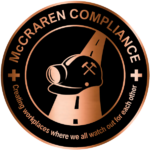First published by Safety+Health an NSC publication.
A lot of rumors are floating around regarding a potential OSHA emergency temporary standard and a National Emphasis Program enforcement action related to COVID-19. Rumors I’ve heard include that there are two versions of an ETS, that a draft is available for internal review and that OSHA is developing an NEP to accompany the ETS.
I think it’s a bit too soon for OSHA to have a draft ETS done, but perhaps one is very close. Based on past practice with a newly issued standard, OSHA will use an NEP to focus on compliance with any potential ETS. Under an Executive Order signed by President Joe Biden on Jan. 21, an ETS, if deemed necessary by the agency, must be issued by March 15. That ETS likely would follow the OSHA COVID-19 guidelines that were updated and rereleased Jan. 29.
The requirements in the NEP would mirror the requirements of the ETS. The following are likely to be addressed by OSHA in the ETS and NEP, and should be implemented at worksites:
- A written infectious disease or exposure control program that covers:
- Physical distancing criteria
- Sanitation (including vacuuming of workplaces)
- Personal hygiene
- Testing and screening – following local guidance
- Engineering controls, including barriers and ventilation – negative pressure and increased ventilation in areas such as conference rooms
- Employee and manager training
- Use of face coverings and respirators (N95 in health care) and use of personal protective equipment (gowns, gloves, faceshields and goggles, as appropriate)
- Identification of where exposures may occur (site risk assessment)
- Procedures for communicating to employees
- Isolation/separation of employees showing any signs or symptoms of exposure
- Use of Environmental Protection Agency-approved cleaning materials and proper PPE for those doing any cleaning
- Whistleblower/retaliation protection
- Recordkeeping
- A designated program coordinator
- Process/procedures for handling customers or visitors
Concerning vaccination, OSHA likely will not require employees to be vaccinated and will allow employees to opt out from being vaccinated. This is based on the fact that OSHA has allowed employees to decline hepatitis B vaccines under the standard on bloodborne pathogens (1910.1030). However, some process or procedure for making vaccines available to employees at no cost will likely be included.
As for employer coverage under the scope of an ETS and NEP, OSHA may defer to the Centers for Disease Control and Prevention, as well as use any and all data OSHA is able to acquire (including recent enforcement data). Initially, an NEP will likely focus on hospitals, assisted-living facilities, nursing homes, health clinics, meat processing (beef, pork and poultry), and warehousing/distribution operations where there are a lot of people. An NEP could provide an enforcement opening if there are outbreaks in other industries.
If employers are thinking this will only apply to health care, they would be mistaken. My advice would be for employers to coordinate with their state and local health departments and look at the risk of COVID-19 in their respective areas. If the risk is “medium to high,” they should have an infectious disease or exposure control program in place. The scope could vary for their program based on the level of risk in their community or history of exposure in their workplace. The unknown is what to do where the risk is low? Low-risk establishments should still have an infectious disease or exposure control program, but it could be scaled back – again, companies facing a low risk should coordinate with their state and local health departments – and all efforts should be documented.
This article represents the views of the authors and should not be construed as a National Safety Council endorsement.
 Richard Fairfax (CIH, retired 2017) joined OSHA in January 1978 and retired from the agency in 2013. At OSHA, he was a practicing field industrial hygienist, as well as the deputy director and director of enforcement programs. In 2008, Richard served as acting director of construction and, in 2010, was designated deputy assistant secretary – overseeing all field, enforcement and training operations. From 1993 through 2010, Richard wrote an industrial hygiene column entitled, “OSHA Compliance Issues” for the Journal of Occupational and Environmental Hygiene. He still serves on the Editorial Review Board. Richard now works part time for NSC-ORC HSE.
Richard Fairfax (CIH, retired 2017) joined OSHA in January 1978 and retired from the agency in 2013. At OSHA, he was a practicing field industrial hygienist, as well as the deputy director and director of enforcement programs. In 2008, Richard served as acting director of construction and, in 2010, was designated deputy assistant secretary – overseeing all field, enforcement and training operations. From 1993 through 2010, Richard wrote an industrial hygiene column entitled, “OSHA Compliance Issues” for the Journal of Occupational and Environmental Hygiene. He still serves on the Editorial Review Board. Richard now works part time for NSC-ORC HSE.
McCraren Compliance offers many opportunities in safety training to help circumvent accidents. Please take a moment to visit our calendar of classes to see what we can do to help your safety measures from training to consulting.


